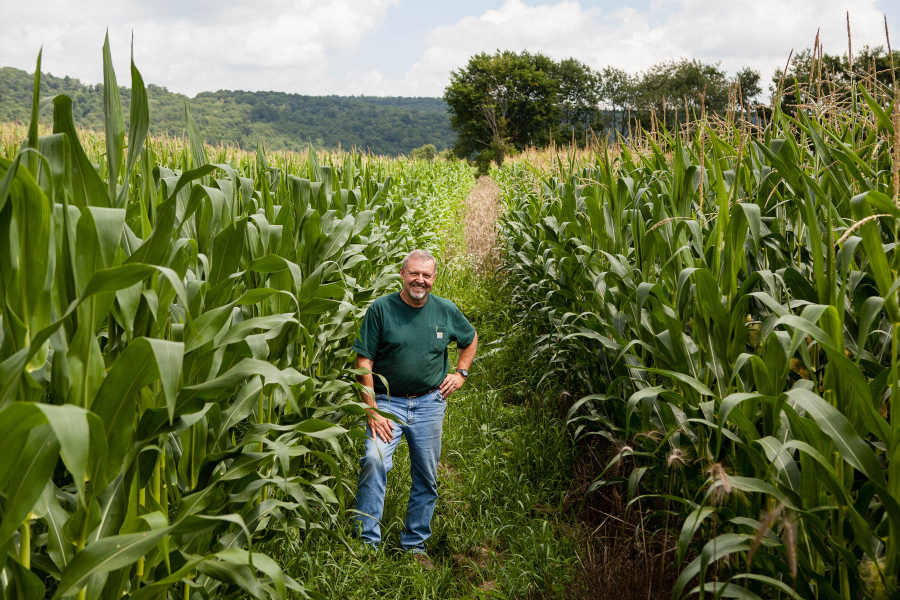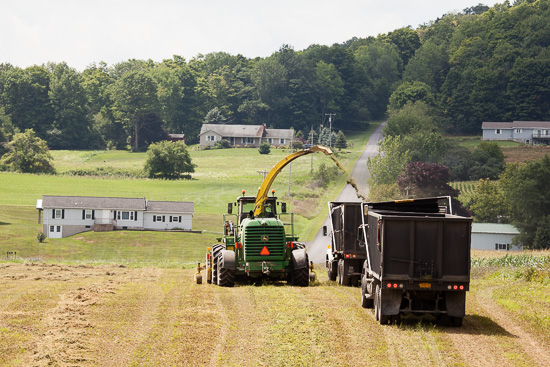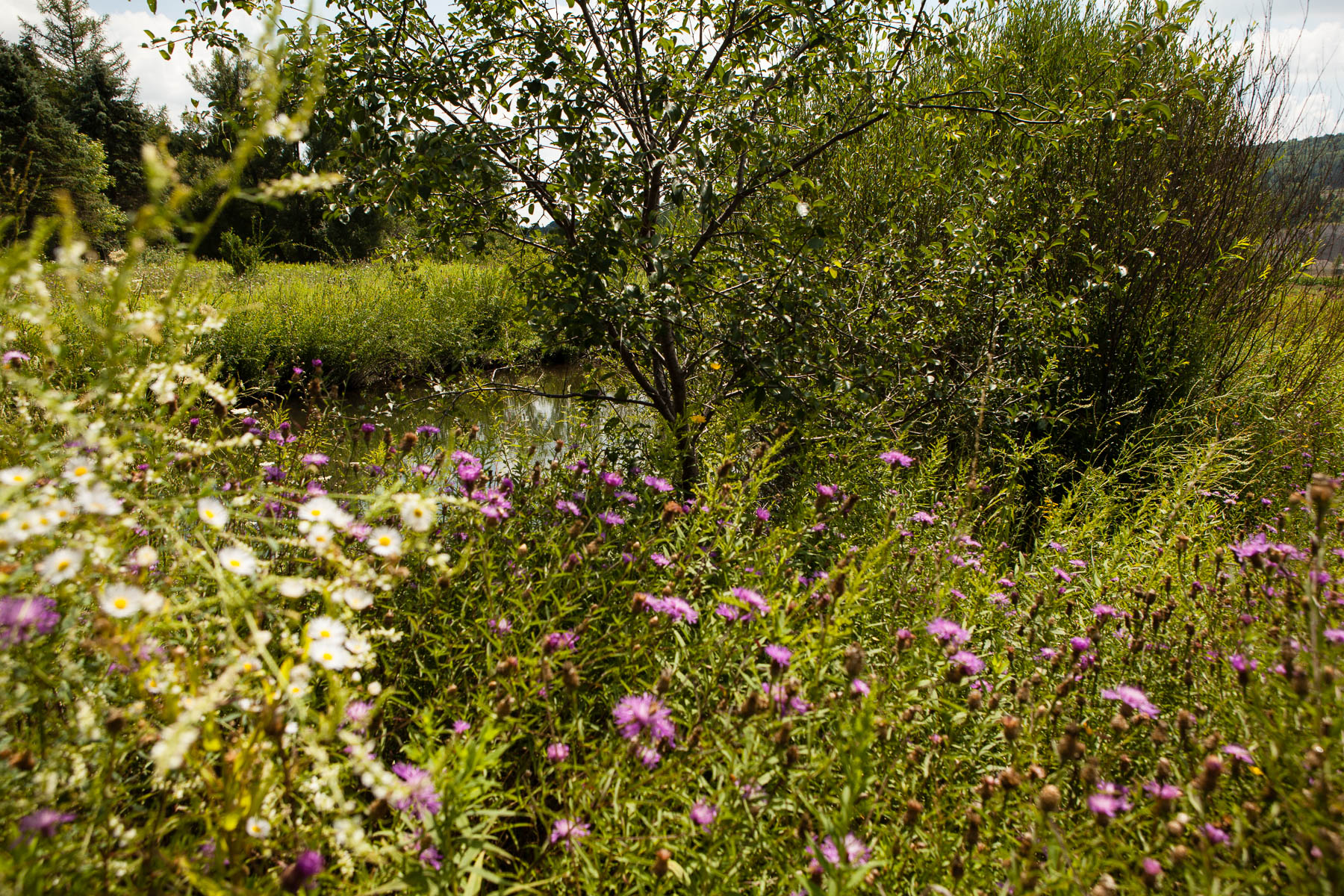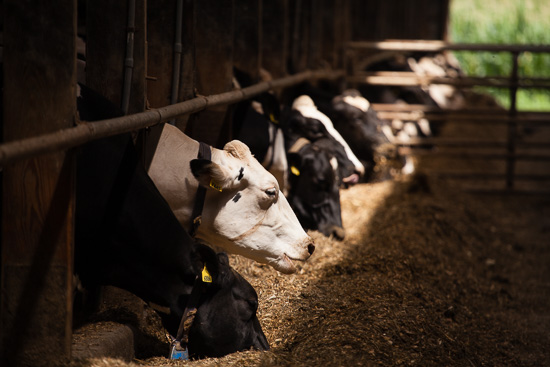E-Z Acres makes stream-friendly farming look, well, easy
A family farm far from the Chesapeake keeps water clean for its community

Michael McMahon walked between two adjacent fields of tall, swaying corn in Homer, New York, to point out an invisible boundary running through his family farm.
Water to the north of that boundary, he explained, eventually flows into Skaneateles Lake, one of the Finger Lakes. But any rain or snow falling to the south ends up in Factory Brook, which flows into the Tioughnioga River, then the Chenango River, the Susquehanna River, and eventually the Chesapeake Bay.
About 30 percent of McMahon’s E-Z Acres Farm, which Michael McMahon owns with his brother Peter McMahon, feeds into the water supply of the city of Syracuse. The larger southern section rests above the groundwater aquifer that is the only water supply for the village of Homer, which abuts the southern end of the farm and is home to 25,000 people. As their business has grown, the McMahons’ awareness of their farm’s potential impact on their neighbors has led them to be fervent stewards and engage their community—for the benefit of both local streams and faraway bodies of water like the Chesapeake Bay.
“The end of our tillable land is only about 200 yards from the big municipal well (in Homer),” McMahon said. “It’s extremely productive ground, but at the same time you could be really doing some damage if you weren’t conscious of it.”
E-Z Acres began with McMahon’s father in 1957, a dairy operation with 160 acres and just eight heifers. Now, their 2,500 acres stretch across much of the valley above Homer in Cortland County.

“The 1400 head that are on the place today all come from those eight heifers,” McMahon said. “We never purchased any animals.”
McMahon says that early advice from his father made it easier to adopt nutrient management practices when the dairy consolidated four separate facilities into one large operation about 20 years ago.
“Even back, as far back as the 60s, we were taught from our dad that you get manure on all the fields, you don’t just concentrate on where it’s easiest and quickest,” McMahon said. “So it was easy for us to transition to a CAFO [concentrated animal feeding operation] where we have all those plans there in the blue notebooks that tell us exactly what field, what time of the year, how many gallons, all of that.”
In 1997, after the consolidation, the McMahons decided to start testing water for nitrates and phosphorus quarterly at five different sites in the valley.
“Nobody ever told us we had to do this,” McMahon said. “But, we just wanted to know if our agronomic practices were in line, that we weren’t going to see spikes in nitrates in well water.”
The tests are also useful for easing worried minds of residents in Homer, and where foul smells wafting from farm fields sometimes cause worries about water quality.
“You’ll get concerns and typically it’s odor-initiated, when we’re spreading manure,” McMahon said.

McMahon said E-Z Acres has grown by purchasing neighboring farms as they have come for sale over the past several decades, and their management practices have extended to these lands. For example, he observed that every farm they bought had its own dump—something his father never believed a farm should have. E-Z Acres subsequently cleared all those dumps.
About five miles of a stream called Factory Brook runs through E-Z Acres, and McMahon said that they have made a concentrated effort to protect what is nearest their cropland, which he estimated at about three and a half to four miles. They have let the New York Department of Environmental Conservation (DEC) establish riparian buffers on both sides of Factory Brook by bringing children from 4-H clubs to plant willow wattles, or shrubs. They have also granted public access through DEC for a section of Factory Brook.
“In many cases the farms that we purchased, you know people were cropping right up to the edge, you know, spreading their manure and stuff like that,” McMahon said. “Where we do farm near the stream, we keep that land in permanent grass as opposed to turning the soil over and putting in a row crop,” McMahon said.
McMahon credited his home state as becoming a leader in the Chesapeake Bay restoration efforts by first addressing local watershed issues, which meant that his farm already had many practices in place by the time the U.S. Environmental Protection Agency (EPA) established the Total Maximum Daily Load (TMDL) in 2010.


“And maybe I’m just biased because I’m in New York, but we got involved in the Agricultural Environmental Management (AEM) program in New York way back in the 80s when they first thought of it.” McMahon said. “We cleaned up dumps. We looked at chemical storage. We did a lot of things way back before it was ever thought to be mandated. And that was all part of New York State’s own program, and not just for the sake of the Chesapeake but for the sake of all watersheds. And we felt at the time I mean we knew that we sat over an aquifer and that we were kind of responsible for keeping the water clean for all these people who either have private or public water supplies derived from this.”
McMahon says they are motivated by trying to “stay ahead of that curve” and “be good neighbors.” For their efforts, the McMahons were awarded the 2015 Agricultural Environmental Management Award by New York Governor Andrew Cuomo.
E-Z Acres hosts open houses regularly, and every June they welcome all of the fifth grade students in the county—about 400 for each of two days.
“So, that’s a ball,” McMahon said. “In many cases it’s the one and only chance a lot of those kids will have to ever see where milk comes from. So we think it’s a good idea to embrace the community, engage the community and be part of it.”
To view more photos, visit the Chesapeake Bay Program's Flickr page

Comments
Hi Michael and family.
It's fantastic to see this article about you and EZ Acres. Keep up the good work.
Your cousin, Becky Gillette
Thank you!
Your comment has been received. Before it can be published, the comment will be reviewed by our team to ensure it adheres with our rules of engagement.
Back to recent stories